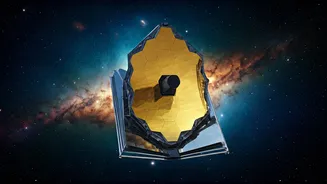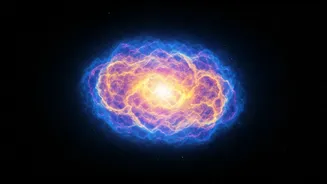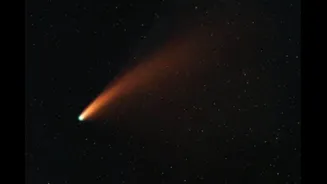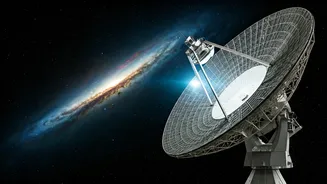Unveiling Cosmic Dawn
The primary objective of the James Webb Space Telescope (JWST) is to study the initial phases of the universe, often referred to as 'Cosmic Dawn.' The JWST is equipped
with cutting-edge infrared capabilities that allow it to see through cosmic dust and detect the faintest light signals from the most distant objects. The telescope's instruments are finely tuned to capture light from the first stars and galaxies that formed after the Big Bang, approximately 13.8 billion years ago. The goal is to understand how these early stars and galaxies influenced the universe we observe today. Scientists are hoping to glean insights into star formation, the evolution of galaxies, and the distribution of elements in the early universe by analyzing the data received from the JWST. This endeavor seeks to create an elaborate picture of the universe's earliest times.
The Telescope's Capabilities
The James Webb Space Telescope (JWST) is significantly more advanced than its predecessor, the Hubble Space Telescope. It boasts a larger mirror and is capable of observing infrared light, which allows it to penetrate through cosmic dust clouds that obscure visible light. The JWST's primary mirror is made up of 18 hexagonal segments that combine to form a 6.5-meter-wide mirror, providing exceptional light-gathering capability. The telescope is positioned in a special orbit around the Sun, approximately 1.5 million kilometers from Earth at the Lagrange point 2 (L2), where it is shielded from the Sun's light and heat. With its sensitive instruments, the JWST can detect the faint infrared light emitted by the first stars and galaxies, enabling astronomers to observe the early universe in unprecedented detail. This makes it a crucial tool for studying the formation of the first stars and galaxies.
Searching for First Stars
Identifying the first generation of stars presents several challenges. These stars, known as Population III stars, are thought to have been composed almost entirely of hydrogen and helium, as heavier elements did not exist at the time. They were extremely massive and short-lived, with lifetimes of only a few million years. The JWST is searching for these stars by looking for their unique spectral signatures and light patterns. Astronomers are analyzing the data collected by the telescope to identify the characteristics that are indicative of Population III stars. The aim is to differentiate between the signals from these ancient stars and other celestial objects, such as galaxies. Discovering these stars would revolutionize our understanding of stellar evolution and the chemical enrichment of the early universe.
Potential Discoveries
The James Webb Space Telescope (JWST) has already made significant advancements in astronomy. There is potential evidence suggesting that the JWST has indeed observed the first generation of stars. This would mark a significant leap forward in our comprehension of cosmic beginnings. If confirmed, this discovery would provide valuable insights into how these stars formed and evolved. The JWST has detected galaxies that existed only a few hundred million years after the Big Bang, offering snapshots of the early universe. Scientists can study the distribution of light and the chemical composition of these galaxies to learn about star formation and the evolution of the universe. The data from the JWST will help refine our models of galaxy formation and provide new information about the building blocks of galaxies and the environments in which they formed.
Future Research
The ongoing work with the James Webb Space Telescope (JWST) is focused on analyzing the data gathered and searching for more evidence of the first stars. Astronomers are employing advanced computational models and analytical techniques to interpret the data from the JWST. They are continually refining their methods to distinguish between potential signals and other sources of light. Upcoming observations will focus on deeper investigations into the early universe, probing further into the Cosmic Dawn. Planned studies include the exploration of additional distant galaxies and the measurement of their physical properties. This will help researchers to build a comprehensive picture of the universe's evolution. The discoveries from the JWST are expected to guide future space missions and astronomical research, fostering a deeper understanding of the cosmos.













